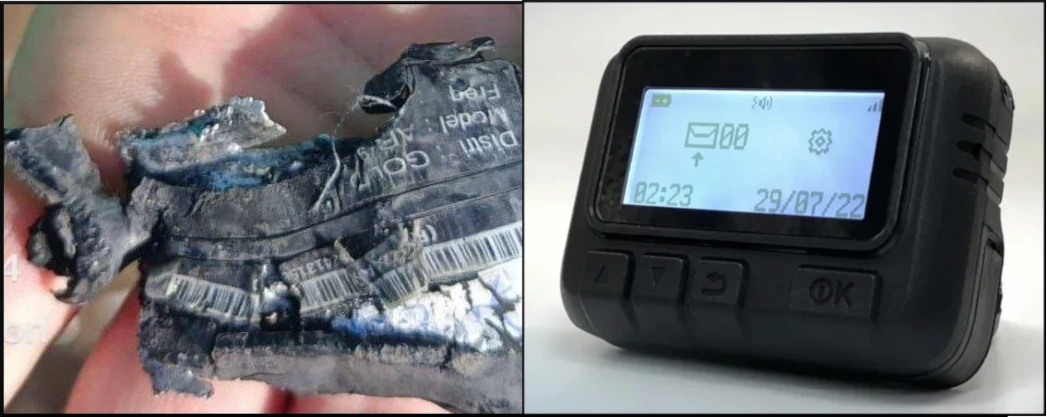by Wyatt Miller, published on Fightback News, September 20, 2024
Thousands of small, seemingly innocuous devices, exploding in the hands and pockets of Israel’s enemies. Tuesday and Wednesday’s bombing attacks across Lebanon have been hailed by Zionists as a crushing blow to Lebanese resistance group Hezbollah, an intelligence coup that one viral tweet called “biblical” in scale and sophistication.
But while the attacks certainly showed cunning, an analysis of their targets, objectives and likely effects reveals not sophistication but a crude logic of collective punishment, common to flailing colonial regimes.
Who are the victims?
Contrary to its portrayal in Western media as a shadowy underground terror organization, Hezbollah is in reality a vast social movement, with mass support and an above-ground institutional network that goes far beyond guerrilla warfare. Hezbollah operates hospitals, charities, schools, agricultural development centers, garbage collection and other social services across Lebanon. It also has a political bureau, with members elected to the Lebanese Parliament and holding ministerial appointments in the official government.
In other words, Hezbollah employs many thousands of people in noncombatant and civilian roles. Many—if not most—of the bombing victims appear to have been from this category, including doctors, first responders, administrative and diplomatic personnel. Iran’s ambassador to Lebanon was also wounded in Tuesday’s attack, as well as several people in neighboring Syria.
While much has been made of the attacks supposedly breaching Hezbollah’s famed operational security measures, recognizing many of the victims to be civilian functionaries paints a different picture. Israel and/or its allies simply planted explosives in large numbers of devices bound for Hezbollah-connected institutions, then began detonating them indiscriminately. Far from a masterstroke of targeted espionage, this is just another of Israel’s grotesque mass bombing campaigns.
A failing strategy
Hezbollah’s frontline positions seem to have been negligibly affected. Resistance operations continue along the Zionist occupation’s northern border.
So what is Israel’s strategy with the device bombings? Terrorism, plain and simple. It sought to convey to the entire population of Lebanon that it will target anyone remotely involved with the resistance, no matter how incidental or tertiary the connection—children and other family members, or even random bystanders.
This is much like Israel’s strategy in Gaza. There, too, Israel has openly targeted civilian families of suspected Hamas members on a mass scale, as well as doctors and nurses, aid workers, police and other civilian functionaries deemed to be “part of” Hamas—which, like Hezbollah, operates a vast network of social and political institutions in addition to its armed wing.
In Gaza, Israel’s strategy has largely failed. Despite Israel’s nearly year-long campaign of mass murder and destruction, Hamas continues to function both as an administrative and military formation, even retaining the ability to strike inside the borders of the Zionist occupation. Crucially, the genocidal scale of Israel’s terrorism has failed to crush the spirit of resistance among the Palestinian masses. Gaza remains a quagmire for Israel.
High-tech atrocities
Likewise, the device bombings in Lebanon are unlikely to win anything beyond a short-term morale boost in the twisted minds of Zionists, but the human toll remains horrifying to contemplate. Focusing on the death count alone obscures the scale and the truly gruesome nature of the attack. While at least three dozen people have been killed by exploding pagers and other devices, hundreds to potentially thousands more have lost hands, eyes and other organs.
Let’s be clear about the historical precedents for this: from 19th-century colonial authorities in the Congo Free State chopping off plantation workers’ hands, to the mutilations of Mau Mau rebel prisoners by British occupiers in 1950s Kenya, to Israel’s own “break their bones” doctrine against Palestinian protesters during the First Intifada—not to mention the tens of thousands wounded during the ongoing Gaza genocide—mass maiming and disfigurement campaigns have long been waged by colonial regimes against indigenous resistance. Whether done by machete or by exploding pager, the sadistic brutality is the same.
If there is anything new about the bombings, it’s the large-scale weaponization of civilian consumer items. It heralds an era where household tech devices might not only be spying on you but waiting for a signal to bomb you. This novel tactic will force resistance groups around the world to reevaluate their suppliers, but the greater economic fallout could affect civilian supply chains and consumer behaviors all over the world. Considering that Israel’s own economy relies heavily on its tech sector, the mass boobytrapping of tech products reeks of desperation.
Regardless whether these attacks continue, and regardless whether Israel ultimately attempts a Gaza-style military invasion in Lebanon, Israel’s crude strategy of mass reprisals against resisting populations is unlikely to succeed in the long run. History shows that colonial violence tends to unite and grow national liberation movements, not silence them.
People here in the United States—Israel’s main director and sponsor—have our part to play. By building international solidarity with liberation movements, we help create the conditions for the overthrow of the imperialist system altogether.
Wyatt Miller is an organizer with the Minnesota Anti-War Committee, and also a member of the United National Antiwar Coalition (UNAC) Administrative Committee.
